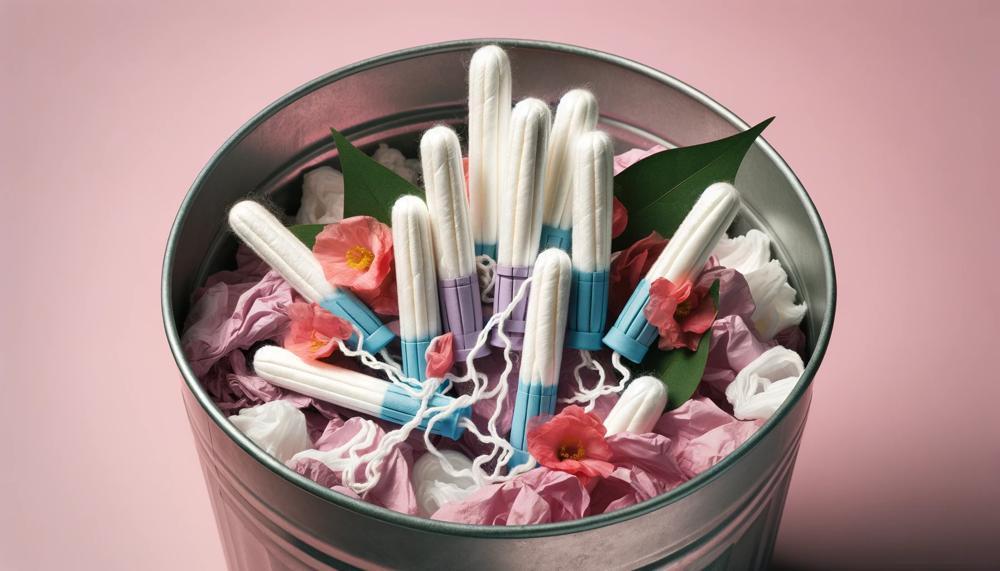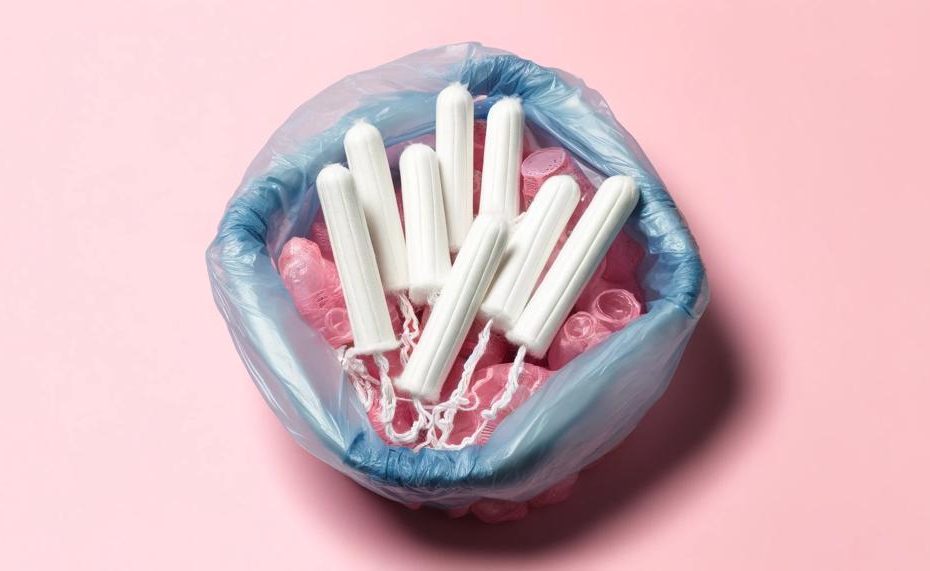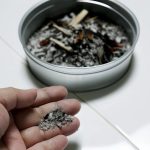The world uses billions of tampons every year, but the important topic of how to properly dispose of them is still not talked about enough. This mistake not only could be bad for your health, but it also makes environmental problems worse in a big way.
One tampon can take up to 800 years to break down in a dump, which shows how important it is to deal with this issue straight on.
Safe disposal of tampons is not only a matter of personal hygiene but also of environmental consciousness. Here’s what we’ll delve into:
- Why traditional methods fall short: Simply flushing tampons can cause plumbing blockages and environmental damage.
- Hygienic disposal techniques: Learn how wrapping a used tampon in toilet paper or a disposal bag can prevent exposure to bodily fluids.
- Portable solutions: Discover how self-sealing disposal bags offer a discreet way to manage tampons on-the-go, making it easier to handle situations at work or while visiting friends.
- Environmental impact: Understand the long-term effects of tampon disposal on our planet and explore sustainable alternatives.
Engaging in this discussion is crucial for promoting better practices that benefit both our health and the environment.
Let’s tackle how to navigate this sensitive subject with confidence and care.
Contents
Steps to Dispose Of Tampons Safely
| Step | Description | Additional Tips |
|---|---|---|
| Wrap the Tampon | Wrap the used tampon in toilet paper or a paper towel to contain all fluids and prevent any leakage. | Ensure the tampon is completely covered to minimise any health risks. |
| Use Disposal Bags | If available, use a self-sealing disposal bag for the wrapped tampon. This is especially handy when you are away from home. | Carry a few disposal bags in your purse or backpack for emergencies. |
| Dispose in Trash | Place the wrapped tampon (and bag, if used) into a trash can. Never flush tampons as they can clog plumbing and cause environmental damage. | Locate a bin that is regularly emptied to avoid any unpleasant smells or sights. |
| Consider Environmental Impact | Be conscious of the environmental implications. Tampons can take centuries to decompose, adding to landfill waste. | Explore eco-friendly products like menstrual cups or biodegradable tampons as alternatives. |
When disposing of tampons, it’s critical to wrap them thoroughly and use disposal bags to contain fluids. This not only respects public hygiene but also reduces potential embarrassment. Placing tampons in the trash, rather than flushing, is essential to prevent plumbing issues and environmental harm.
Get Comfortable with Tampons with this Expert Series
To ensure you’re disposing of tampons safely and considerately, there are a few practical steps you can adopt. Firstly, always wrap used tampons in toilet paper or paper towels. This practice helps contain any fluids and makes the disposal process more sanitary.
Secondly, consider investing in self-sealing disposal bags. These handy bags not only conceal the contents but also prevent the escape of odors, making them ideal for discreet disposal while you’re on the go.
Additionally, it’s crucial to be mindful of the broader environmental impact of tampon disposal. Although it might not seem like a significant action, proper disposal is key to mitigating potential harm, as feminine hygiene products can linger in landfills for centuries. Here’s a simple breakdown in table format for easy reference on how to responsibly dispose of tampons:
| Action | Reason | Benefit |
| Wrap in toilet paper | Contains fluids and makes disposal sanitary | Prevents exposure and maintains hygiene |
| Use self-sealing bags | Seals in odour and contents | Provides a discreet and odour-free solution for on-the-go disposal |
| Consider environmental impact | Reduces potential harm to the environment | Helps mitigate long-term environmental damage |
Tips About How to Dispose Of Tampons Safely
Safely disposing of tampons is crucial to maintain hygiene and environmental responsibility.
| Method | Description | Environmental Consideration |
| Wrapping in Paper | Wrap the used tampon in toilet paper or a sanitary napkin to contain fluids before discarding it in the bin. | Helps reduce direct exposure but still contributes to landfill waste. |
| Self-sealing Bags | Utilize specially designed self-sealing bags to discreetly dispose of tampons. These bags can be sealed and thrown away, offering a hygienic solution when outside the home. | These bags add to plastic use but provide a secure way to contain bio-waste. |
| Bin Disposal | Always dispose of tampons in a bin rather than flushing them. Flushing tampons can lead to plumbing blockages and environmental pollution. | Prevents waterway contamination but does not alleviate landfill concerns. |

Here are detailed steps and considerations:
- Wrap Effectively: Enclose the tampon in toilet paper, ensuring all fluids are absorbed and the item is fully covered, making it safer for sanitation workers and preventing any exposure during handling.
- Utilize Specialty Products: Consider investing in biodegradable disposal bags if available. These provide a more sustainable option and offer convenience for disposal while away from home.
- Proper Bin Placement: Always use a lined bin for disposal. This practice helps prevent leakage and odours in bathroom areas.
- Education on Non-Flushability: Educate household members and guests that tampons should not be flushed as they contribute to significant plumbing issues and environmental damage.
- Consider Environmental Impact: Understand that tampons may take centuries to decompose. Looking into more sustainable menstrual products like menstrual cups or biodegradable tampons can be a proactive step towards environmental stewardship.
Conclusion
Concluding our exploration of safe tampon disposal, it’s vital to emphasize that each small action can significantly impact both personal hygiene and our planet’s health. Tampons, a necessity for many, pose unique challenges once they’ve served their purpose. Notably, they take centuries to decompose, making thoughtful disposal essential.
The key takeaway is to avoid flushing tampons at all costs, as this can lead to severe plumbing issues and contribute to environmental pollution. Instead, wrapping the tampon in toilet paper or a specialized disposal bag before placing it in the bin is a simple yet effective method to ensure sanitary and eco-friendly disposal. These bags, often self-sealing, offer an added layer of discretion and help contain any potential odors, making them a considerate choice for on-the-go needs.
As we close this discussion, let’s reflect on the broader implications of our everyday choices. Opting for biodegradable tampons or considering reusable menstrual products like menstrual cups can further decrease environmental impact.





